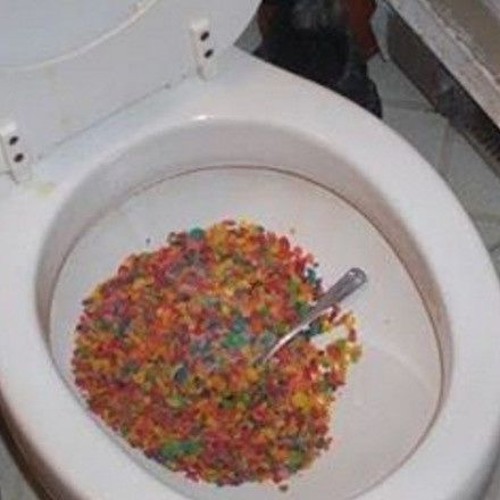Each person may have their unique idea on the subject of Think Twice Before Flushing Food Down Your Toilet.

Intro
Lots of people are typically faced with the problem of what to do with food waste, specifically when it comes to leftovers or scraps. One common question that arises is whether it's all right to flush food down the bathroom. In this short article, we'll explore the reasons why people may think about purging food, the consequences of doing so, and different techniques for appropriate disposal.
Reasons individuals could consider purging food
Absence of awareness
Some individuals may not recognize the prospective damage caused by flushing food down the bathroom. They may mistakenly think that it's a harmless technique.
Comfort
Flushing food down the bathroom may look like a fast and easy service to getting rid of undesirable scraps, specifically when there's no nearby garbage can available.
Laziness
In many cases, individuals might merely pick to flush food out of large laziness, without considering the repercussions of their actions.
Effects of flushing food down the bathroom
Environmental impact
Food waste that ends up in rivers can contribute to pollution and damage water environments. Furthermore, the water used to flush food can strain water sources.
Plumbing problems
Flushing food can cause clogged up pipelines and drains, creating expensive plumbing repairs and aggravations.
Kinds of food that need to not be flushed
Fibrous foods
Foods with fibrous textures such as celery or corn husks can obtain tangled in pipes and cause clogs.
Starchy foods
Starchy foods like pasta and rice can take in water and swell, causing blockages in pipes.
Oils and fats
Greasy foods like bacon or cooking oils ought to never be flushed down the commode as they can solidify and create obstructions.
Correct disposal techniques for food waste
Making use of a waste disposal unit
For homes outfitted with garbage disposals, food scraps can be ground up and flushed via the plumbing system. Nonetheless, not all foods are suitable for disposal in this way.
Recycling
Specific food packaging materials can be reused, minimizing waste and lessening environmental influence.
Composting
Composting is an eco-friendly means to deal with food waste. Organic materials can be composted and utilized to enhance soil for gardening.
The significance of appropriate waste management
Reducing environmental injury
Proper waste administration techniques, such as composting and recycling, aid minimize contamination and protect natural deposits for future generations.
Shielding plumbing systems
By preventing the practice of flushing food down the bathroom, home owners can prevent expensive pipes repairs and maintain the integrity of their plumbing systems.
Final thought
Finally, while it may be appealing to flush food down the toilet for ease, it is necessary to comprehend the possible consequences of this activity. By adopting appropriate waste monitoring techniques and taking care of food waste responsibly, individuals can contribute to much healthier pipes systems and a cleaner setting for all.
FLUSH FOOD DOWN THE TOILET?
FLUSHING FOOD CAN CAUSE BLOCKED DRAINS IN YOUR HOME
All of the plumbing fixtures in your home are connected to the same sewer pipe outside of your home. This outdoor sewer pipe is responsible for transporting all the wastewater from your home to the Council sewer mains. Even small pieces of food that go down the kitchen sink can cause problems for your sewer. It should therefore be obvious that flushing larger bits of food, such as meat, risks a clog in either the toilet itself or the sewer pipes. Flushing greasy food is even more problematic because oil coagulates when it cools, coating the interior lining of your pipes.
THE TOILET IS NOT A BIN
Food isn’t the only thing that people shouldn’t be flushing down the toilet. People use the toilet to dispose of all kinds of things such as tampons, makeup wipes, dental floss, kitty litter and even underwear. Water goes to great lengths to educate residents about the high costs and stress placed on wastewater treatment systems simply from people flushing the wrong stuff down the toilet. It costs taxpayers millions of dollars each year, and homeowners thousands in blocked drain repairs.
FLUSHING FOOD IS A WASTE OF WATER
Flushing food is a waste of our most precious resource - water. In June this year Level 1 water restrictions were introduced to protect water supply from drought conditions. Much of New South Wales continues to be affected by prolonged drought with recent figures revealing up to 97 per cent of the state remains in drought. Depending on whether you have a single or dual flush toilet, every single flush uses between five and 11 litres of water. In the current climate this is a huge amount of water to be wasting on flushing food that should be placed in the bin (or better yet, the compost).
https://www.jabplumbingsolutions.com.au/blog/can-you-flush-food-down-the-toilet

I was made aware of that article on from someone on a different site. Make sure you pause to distribute this post if you enjoyed reading it. I enjoy your readership.
Schedule Your Service